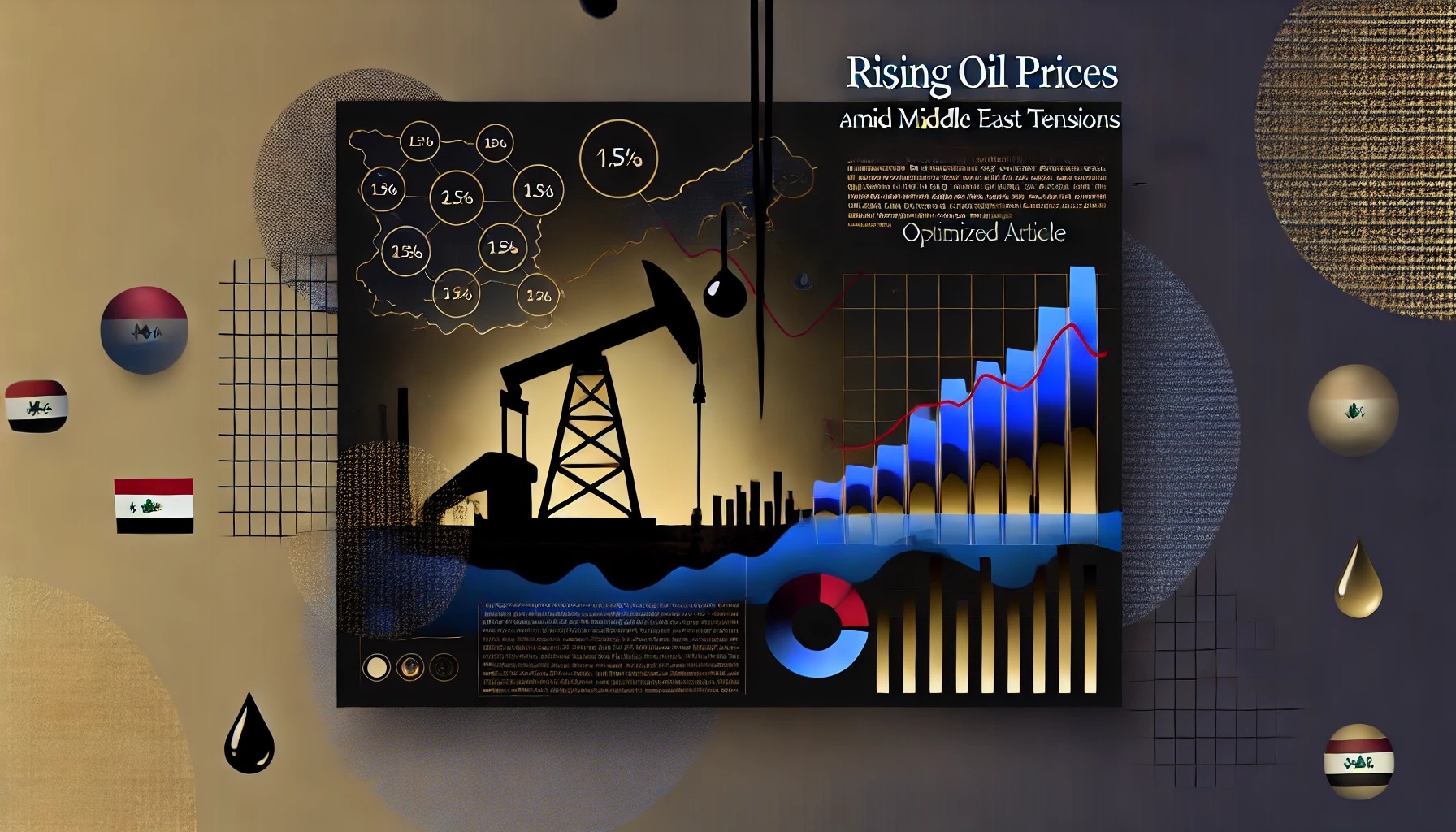Oil prices saw a modest rise on Wednesday as concerns over the Middle East oil conflict heightened, potentially impacting oil supplies from this crucial production region. However, a significant build-up in U.S. crude inventories has limited the upward trend.
Brent crude futures increased by 34 cents, or 0.46%, closing at $73.90 per barrel. Similarly, U.S. West Texas Intermediate crude gained 27 cents, or 0.39%, reaching $70.10 per barrel.
On Tuesday, the conflict escalated as Iran launched over 180 missiles directly targeting Israel, marking the largest attack to date. Israel and the U.S. have vowed retaliation, further intensifying the Middle East oil conflict.
Impact of the Middle East Oil Conflict on Supply Risks
According to U.S. news website Axios, Israel’s retaliation could potentially target Iranian oil production facilities, among other strategic locations. This possibility has fueled market anxiety over possible supply disruptions in the global oil market.
Iran announced on Wednesday that its missile strikes against Israel have ended, contingent on no further provocations. However, any counter-response from Israel would be met with "widespread destruction," warned Iranian officials.
Analysts predict that any attack on Iran’s oil infrastructure might provoke a counterstrike on Saudi oil facilities, resembling the 2019 attack on Saudi crude processing plants. Tamas Varga of oil brokerage PVM noted, “Any of these events would irretrievably send oil prices considerably higher.”
In another sign of escalating tensions, Israel deployed infantry and armored units to engage in ground operations against Iran-backed Hezbollah in southern Lebanon.
During a United Nations Security Council meeting on Wednesday, Israel and Iran exchanged threats, each vowing retaliation if attacked, intensifying concerns about the Middle East oil conflict.
US Crude Inventories Rise Amid Conflict
Meanwhile, Iran's oil production surged to a six-year high of 3.7 million barrels per day in August, according to ANZ analysts. Despite this increase, U.S. crude inventories rose by 3.9 million barrels to 417 million in the week ending Sept. 27, a substantial increase compared to analysts' expectations for a 1.3 million-barrel draw.
Matt Smith, the lead oil analyst at Kpler, noted, “As we descend into seasonal refinery maintenance, a chunky drop in refining activity has ushered in a build to crude inventories.”
OPEC+ Response and Potential Oil Market Changes
In response to the escalating Middle East oil conflict, a meeting of OPEC+ ministers on Wednesday concluded with a decision to maintain the current oil output policy. The group plans to increase production by 180,000 barrels per day starting in December.
ANZ analysts emphasized that any suggestion of production hikes could offset fears of supply disruptions due to tensions in the Middle East.
Additionally, a report from The Wall Street Journal mentioned that Saudi Arabia's oil minister cautioned that oil prices could fall to $50 per barrel if OPEC+ members do not adhere to agreed-upon output cuts. However, OPEC dismissed the report as “wholly inaccurate and misleading.”
By keeping an eye on developments in the Middle East oil conflict, market participants can anticipate potential shifts in global oil supply and pricing.



 BOJ Poised for Historic Rate Hike as Japan Signals Shift Toward Monetary Normalization
BOJ Poised for Historic Rate Hike as Japan Signals Shift Toward Monetary Normalization  Japan Inflation Holds Firm in November as BOJ Nears Key Rate Hike Decision
Japan Inflation Holds Firm in November as BOJ Nears Key Rate Hike Decision  Asian Currencies Trade Sideways as Dollar Weakens Ahead of Key U.S. Data
Asian Currencies Trade Sideways as Dollar Weakens Ahead of Key U.S. Data  U.S. Stock Futures Edge Higher as Micron Earnings Boost AI Sentiment Ahead of CPI Data
U.S. Stock Futures Edge Higher as Micron Earnings Boost AI Sentiment Ahead of CPI Data  Bank of Korea Downplays Liquidity’s Role in Weak Won and Housing Price Surge
Bank of Korea Downplays Liquidity’s Role in Weak Won and Housing Price Surge  BoE Set to Cut Rates as UK Inflation Slows, but Further Easing Likely Limited
BoE Set to Cut Rates as UK Inflation Slows, but Further Easing Likely Limited  Silver Prices Hit Record High as Safe-Haven Demand Surges Amid U.S. Economic Uncertainty
Silver Prices Hit Record High as Safe-Haven Demand Surges Amid U.S. Economic Uncertainty  South Korea Warns Weak Won Could Push Inflation Higher in 2025
South Korea Warns Weak Won Could Push Inflation Higher in 2025  Asian Fund Managers Turn More Optimistic on Growth but Curb Equity Return Expectations: BofA Survey
Asian Fund Managers Turn More Optimistic on Growth but Curb Equity Return Expectations: BofA Survey  Oil Prices Rebound as Trump Orders Blockade of Sanctioned Venezuelan Tankers
Oil Prices Rebound as Trump Orders Blockade of Sanctioned Venezuelan Tankers  Gold and Silver Prices Dip as Markets Await Key U.S. Economic Data
Gold and Silver Prices Dip as Markets Await Key U.S. Economic Data  Oil Prices Climb on Venezuela Blockade, Russia Sanctions Fears, and Supply Risks
Oil Prices Climb on Venezuela Blockade, Russia Sanctions Fears, and Supply Risks  Austan Goolsbee Signals Potential for More Fed Rate Cuts as Inflation Shows Improvement
Austan Goolsbee Signals Potential for More Fed Rate Cuts as Inflation Shows Improvement  Singapore Growth Outlook Brightens for 2025 as Economists Flag AI and Geopolitical Risks
Singapore Growth Outlook Brightens for 2025 as Economists Flag AI and Geopolitical Risks  RBA Unlikely to Cut Interest Rates in 2026 as Inflation Pressures Persist, Says Westpac
RBA Unlikely to Cut Interest Rates in 2026 as Inflation Pressures Persist, Says Westpac  Asian Markets Rebound as Tech Rally Lifts Wall Street, Investors Brace for BOJ Rate Hike
Asian Markets Rebound as Tech Rally Lifts Wall Street, Investors Brace for BOJ Rate Hike  Asian Stocks Edge Higher as Tech Recovers, U.S. Economic Uncertainty Caps Gains
Asian Stocks Edge Higher as Tech Recovers, U.S. Economic Uncertainty Caps Gains 

























